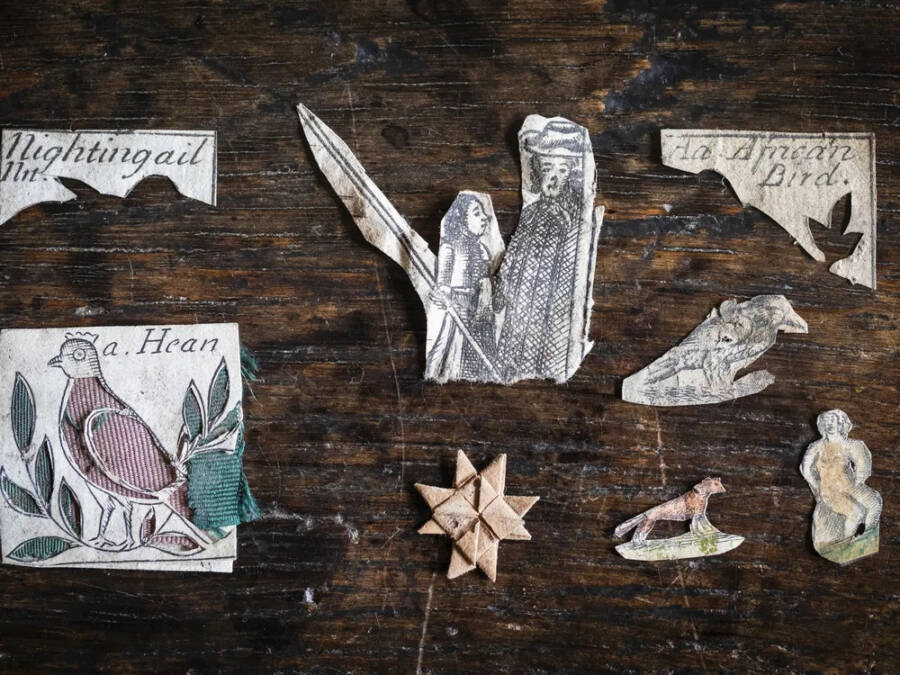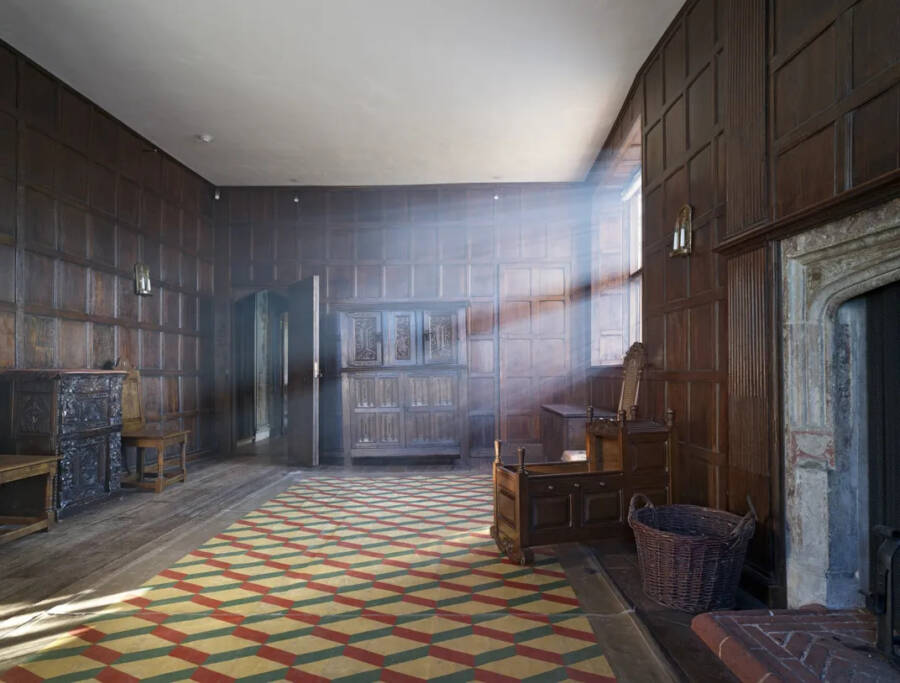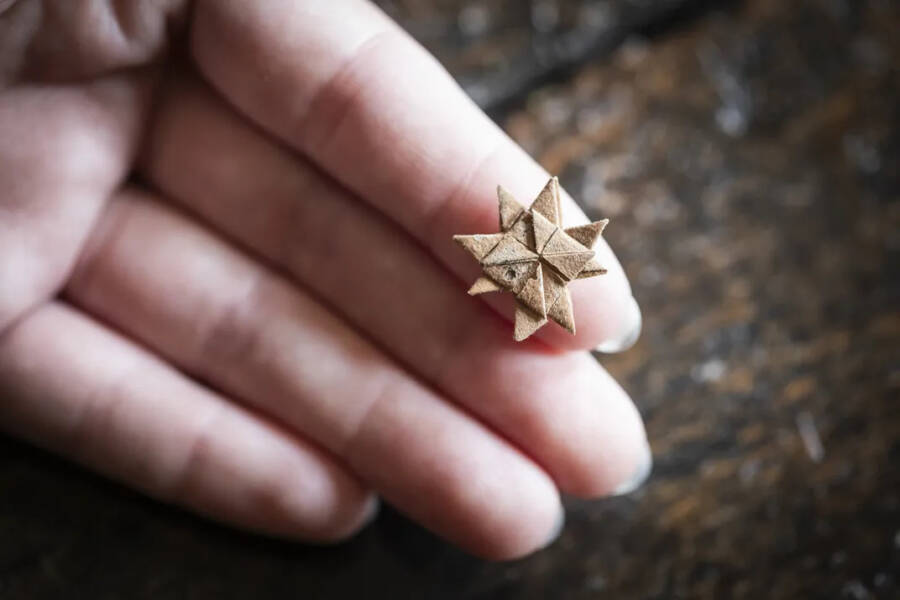The paper cuttings at Sutton House in London are more than 350 years old and are one of just three examples of similar 17th-century English art know to exist today.

James Dobson/National Trust ImagesThe paper cuttings made by 17th-century schoolgirls.
In the 1980s, a historic home in London known as Sutton House was falling into a state of disrepair. The building was frequently used by squatters and was considered unsafe for habitation. Despite the tremendous amount of work renovations would require, locals from the Sutton House Society successfully campaigned to save the 16th-century home and got to work transforming it into a museum.
During this restoration project, workers discovered a handful of paper cuttings made by young girls who once lived and studied at Sutton House when it was a boarding school in the 17th century. It wasn’t until last year that these paper cuttings were properly cataloged and studied. Now, the 350-year-old crafts are set to go on display at Sutton House for visitors to enjoy.
Renovations Reveal 350-Year-Old Paper Cuttings At Sutton House
Workers first discovered the collection of 17th-century paper cuttings while renovating Sutton House in the 1980s. They were found beneath the floorboards in one of the historic home’s rooms.
The trove included paper cut-outs of birds, foxes, and people, as well as an intricately folded paper star. For being over 300 years old, the items were surprisingly well preserved. They were also quite rare, as paper design cutting requires the use of delicate materials prone to degradation over time.

James Dobson/National Trust ImagesThe room in Sutton House where the paper cuttings were discovered.
“It’s an art form that is discussed in 17th-century domestic manuals, but there is very little material survival — three examples from 17th-century England, of which this is one,” Isabella Rosner, an expert in early modern material culture, told The Guardian.
Surprisingly, no one had cataloged the paper cuttings until last year. Now, with the help of a group of volunteers, Sutton House is planning to put them on display for the first time.
So, what can these simple artifacts tell us about the history of Sutton House?
Life At Sutton House In The 17th Century

James Dobson/National Trust ImagesA paper star made by a boarding school student.
Sutton House was first built in 1535 as a home for one of King Henry VIII’s statesmen, according to a statement by the National Trust. It then switched hands several times before landing in the possession of a wealthy widow named Sarah Freeman. Freeman made the decision to transform the residence into a place of learning for young ladies, and it opened as a boarding school in 1657.
During the 17th and 18th centuries, young women from middle- and upper-class families attended the institution and received instruction on subjects like writing, math, housekeeping, reading, music, and art. During art classes, the young ladies were taught how to cut decorative paper clippings and delicately fold paper into small shapes.
“They were learning to create something beautiful, and it required patience, dexterity, and artistry,” Rosner told The Guardian.
Historians believe that Hannah Woolley, author of the book A Guide to Ladies, Gentlewomen, and Maids (1668), taught at the school and may have introduced paper cutting into the curriculum.
“We have long known about the role of Sutton House as a girls’ school over its lifetime, but with few details about the classes, the pupils, or teaching,” said Kate Simpson, the senior collections officer at the National Trust, in the statement. “This discovery brings to vivid life one of the skills that pupils were taught and the painstaking process of handling, cutting, and coloring such tiny pieces of paper.”
After reading about the paper cuttings discovered at Sutton House, dive into the sordid history of Indigenous boarding schools. Then, look through these photos of England’s Victorian slums.





